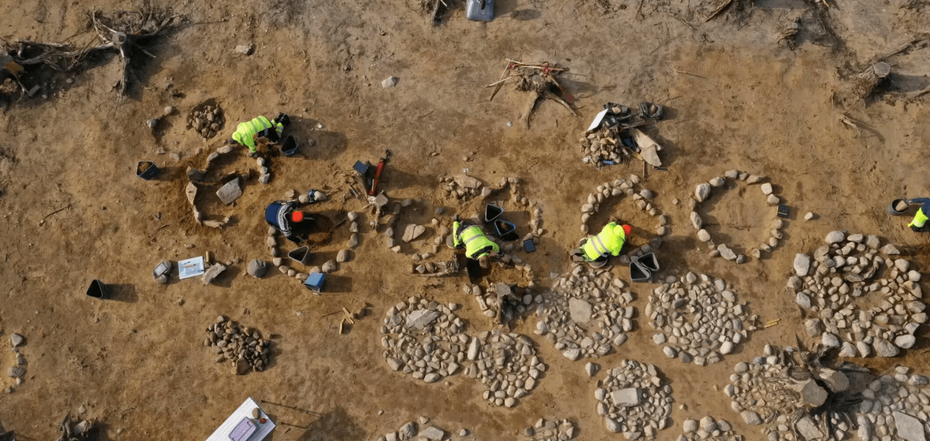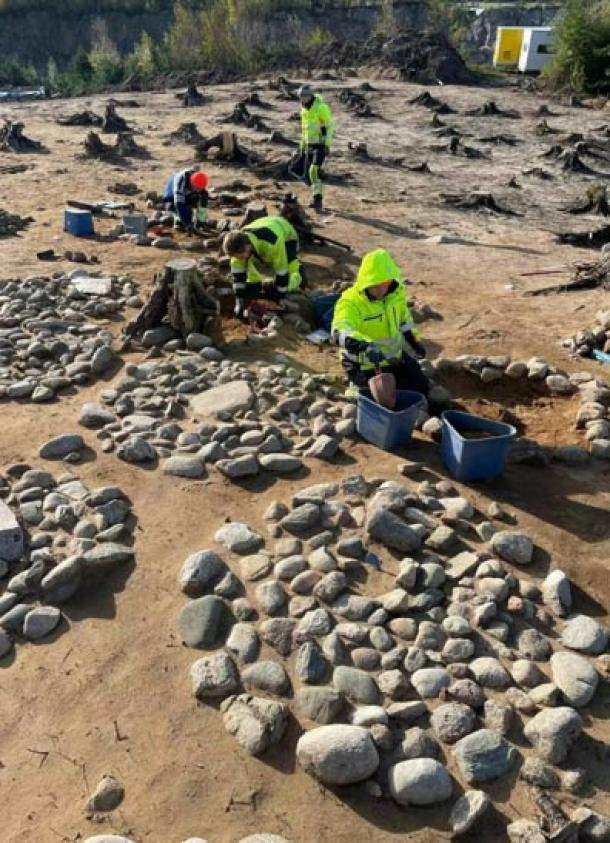News
Died 2,800 years ago. A unique burial of children has been discovered under stone circles in Norway
Archaeologists from the Museum of Cultural History in Oslo have discovered an unknown burial site in a quarry near Fredrikstad, in southeastern Norway. The find was found to contain the remains of mostly children, all of whom died more than 2,000 years ago.
The partially burned bones of the children, whose ages ranged from birth to six years old at the time of death, were buried directly beneath stone circles, in exquisitely crafted ceramic pots, long since broken into fragments. The burial field is unique in the European context, writes Arkeo News.
After dating the skeletal remains, it was discovered that almost all of the children were buried in the Bronze and Iron Ages of Norway, between 800 and 400 BC.
"The dating shows that the burial site was used for a long period, so they could not have all perished during a single natural disaster, disease outbreak or epidemic," says Guro Fossum.
The stone circles were found in 2023 while excavating a rural field near the southern Norwegian town of Fredrikstad. The stone formations were all one to two meters in diameter and had a perfectly round or oval shape. Some had large stones placed inside or around the edges, signaling some variety or creativity in design.
The tombs show variations in the arrangement of cremated remains, some arranged in urns, others simply under stone circles. In many cases, the amount of bone found was minimal, ranging from 0.1 to 240 grams per tomb, presenting a significant challenge to the archaeologists and osteologists involved in the study.
In addition to the children's tombs, everyday objects such as bonfires and cooking pits were found near the site. This means that the site may have functioned as a community gathering place in addition to a cemetery, possibly for funerals.
"There was something special about this place. The tombs are very close together. They were apparently in an open landscape, there were transportation routes nearby, so everyone knew about them. Also, all the tombs were very beautiful and elaborately decorated. Each stone came from a different place and was precisely placed in the formation.
The burial site, unique in the European context, generated interest not only for its rarity but also for its emotional consequence.
Associate Professor of Archaeology at the University of Stavanger, Håkon Rijersen, emphasizes that this find connects us deeply to the universal human emotions associated with losing children and mourning them, showing that people in the past were not very different from us in terms of how they honored their dead.
"The social structure seems to have been more egalitarian because there wasn't much difference between graves. The same types of graves, implements and burial methods were used. This suggests a society where community was important" - she said.
Only verified information from us in Telegram-channel OBOZ.UA and Viber. Do not fall for fakes!




























